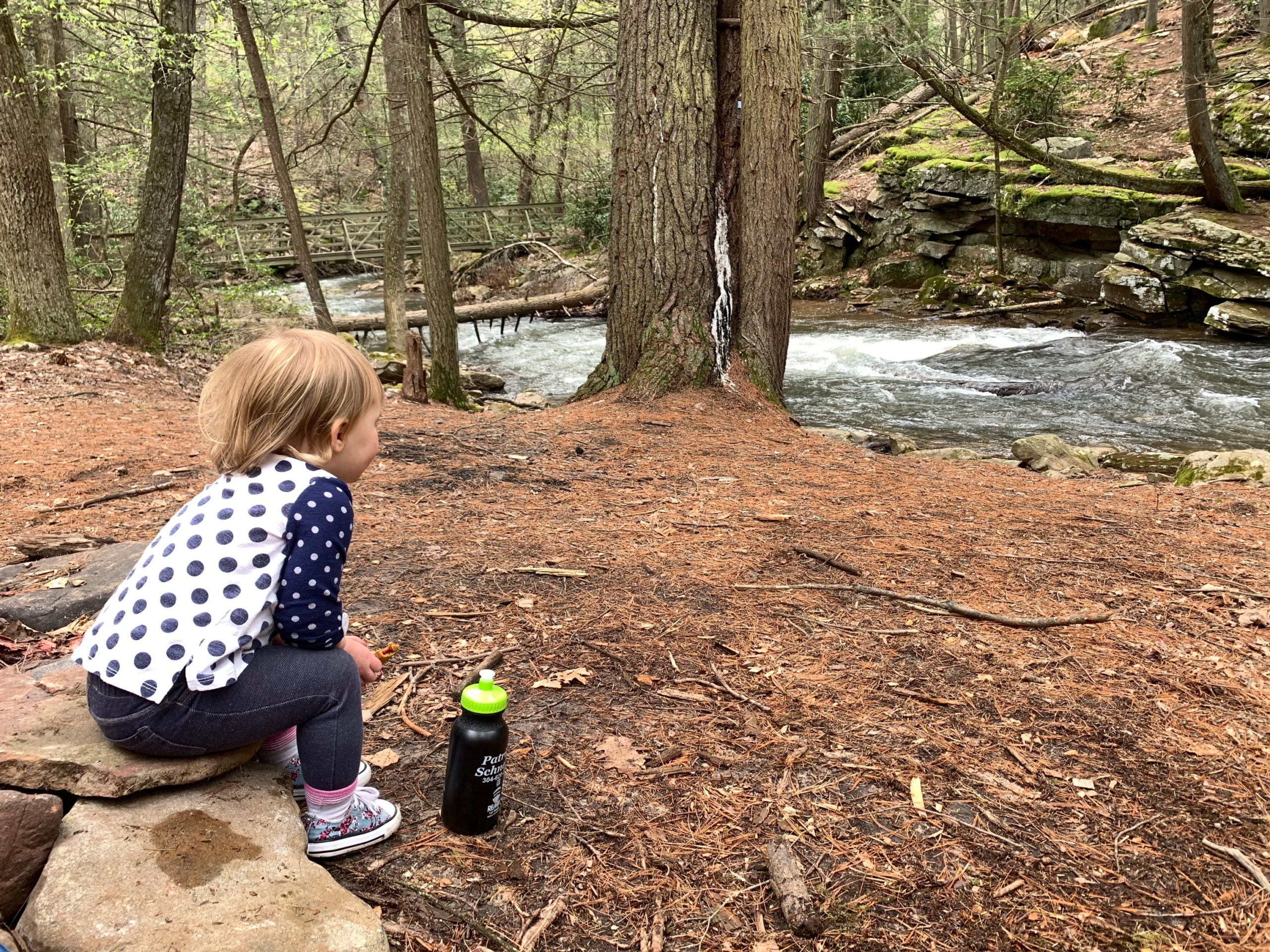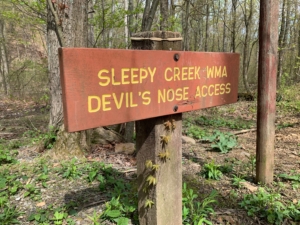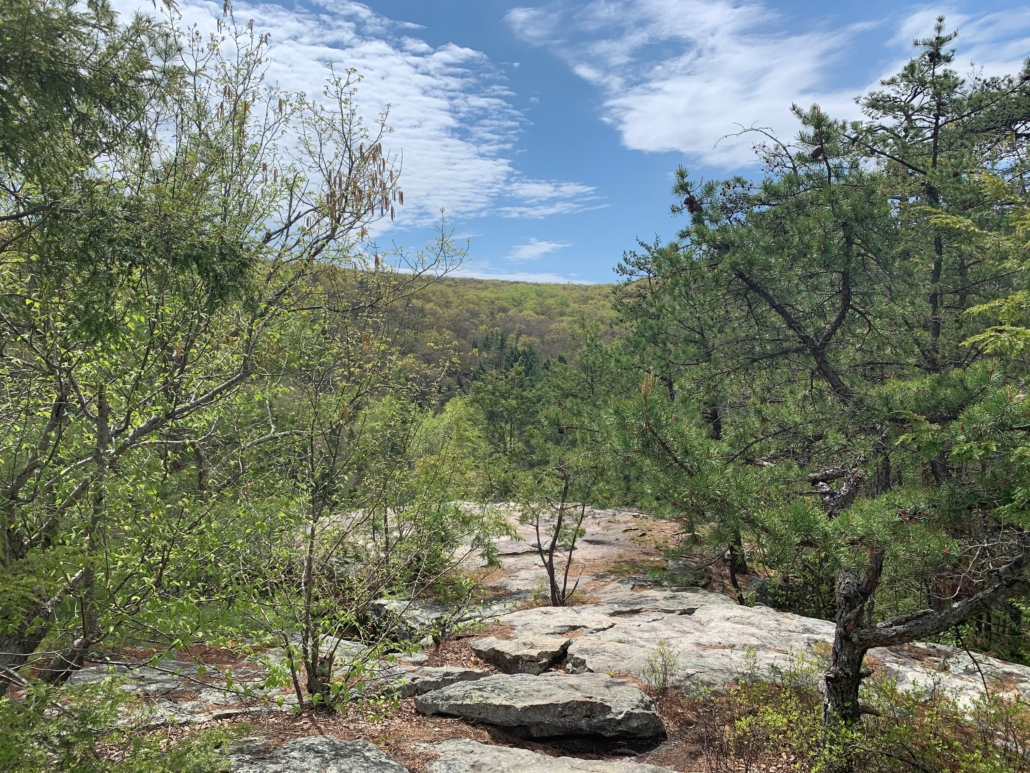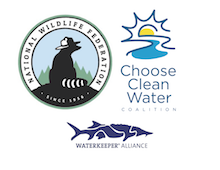Finding Peace in Nature: Devil’s Nose
“If conservation of natural resources goes wrong, nothing else will go right.” –M.S. Swaminathan, geneticist
Dear Friend of WV Rivers,
I’d like to start this week by acknowledging you, our supporter, for reading our stories of finding peace in nature. You make this all worthwhile, so thank you!
I’ve been able to open up in these stories about my life and family. I’ve talked about health & well-being; the essentials of life; what is home; my unabashed love for trees; and being a good steward.
But there’s one thing I haven’t talked about yet: preparedness. Being prepared means following the adage “plan for the worst, hope for the best”. (SPOILER ALERT – no toilet paper was hoarded in the writing of this blog.)
This week, we put our preparedness skills to the test on our best adventure yet – Devil’s Nose Hike.
On the northern tip of Sleepy Creek Wildlife Management Area, a 22,000-acre preserve owned by the WV Division of Natural Resources, is a jagged outcrop of sandstone known as Devil’s Nose. Although this name most likely refers to the shape of the rock, to me it was also a warning to be on high alert for venomous snakes, namely copperheads and rattlesnakes, that make their dens in the rocky landscape. (We prepared by learning about first aid and then crafting our own “first aid kit”.
Snakes aside (of which we saw none, despite our watchful eyes), this was undoubtedly the best hike we’ve been on recently. The peaceful stillness of the hemlock forests, the rushing waters of Meadows Branch creeping with mountain laurel, and the view from the overlook were all breathtaking. When we were “on top of the planet”, as my daughter referred to it, there wasn’t a car or house in sight, only blue skies, green trees, and the soft whisper of water tumbling over mossy boulders below.
In addition to providing us bountiful recreational opportunities, conserved lands like Sleepy Creek Wildlife Management Area are critical for protecting our drinking water supplies from the impacts of development.
To that end, WV Rivers Coalition coordinates the Safe Water Conservation Collaborative, a vibrant network of more than 25 partners, including water utilities, land conservation organizations, and community groups working together to “Protect Drinking Water through Land Conservation”.
Our partners have recently prioritized high-value land to conserve in Jefferson & Berkeley Counties – we encourage supporters like you to read the story and explore the data. If you feel like it, you can even provide us with feedback to strengthen our model in the future.
Although the Collaborative is currently focused in these two counties, we are very supportive of land conservation efforts in neighboring Morgan County. For example, the Sleepy Creek Watershed Association has partnered with the WV Conservation Agency in recent years to conserve land in the Sleepy Creek Watershed. Similarly, the Cacapon & Lost Rivers Land Trust also places a high priority on conserving land to protect water quality.
Interested in volunteering with the Collaborative? Join now!
We have special places like Devil’s Nose all across the eastern panhandle full of mystery, history, significance, and value.
Be it the underground mazes of caverns accessed by unwitting sinkholes; or streamside forests full of shady pools of cool water; or battlefields of conflicts past and yet so present; or endangered species clinging to their final habitat of hope; or farmland lovingly passed down through the generations, our land is our heritage, if only we are prepared to protect it.
On our hikes, especially the snakey ones, we carry sticks to test the ground ahead of us. We step gently over logs and rock piles. We stay alert. In short, we are prepared.
On our land, we must do the same thing. We must use the tools at our disposal, including voluntary conservation easements, to protect our land and water forever. We must be prepared, because if not, we’ll lose our heritage forever.
And there’s no anti-vemon for that.
To clean water and clean hands,
Tanner Haid, Eastern Panhandle Field Coordinator
PS – Did you know copperheads have a striking distance of 3 feet? As you practice social distancing with snakes, make sure to do the same with your fellow hikers. Pass at a respectful distance, take turns at crowded areas of the trail such as the overlook, and stay safe!








